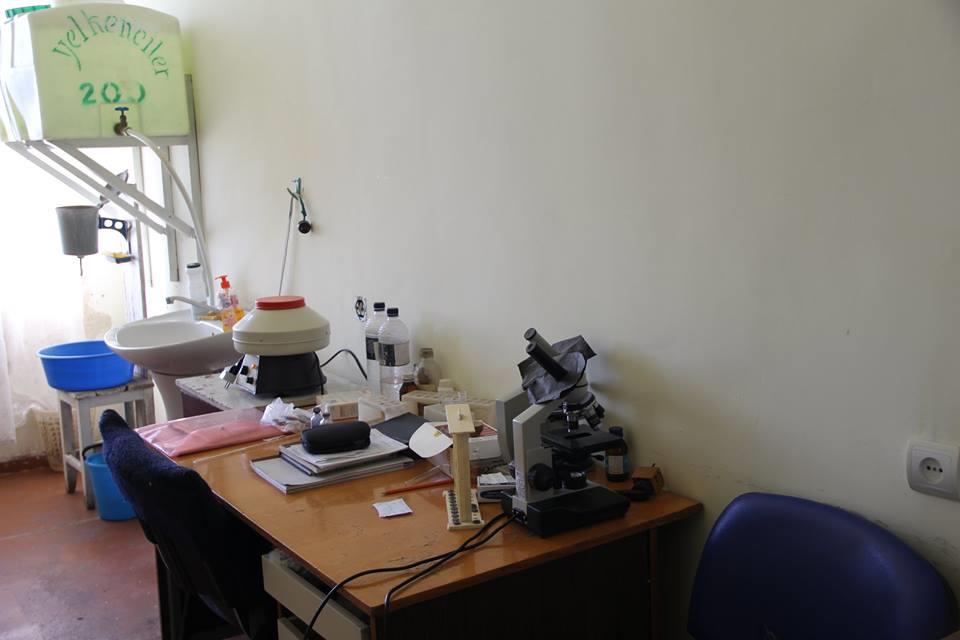Better not get sick
And that’s the outpatient clinic?!
Built in the 60s, the outpatient clinic in Tandzut village provides services to 1,900 residents of the community. A ramshackle building is located in the village outskirts. To look at it, you’ll never guess that it’s a medial institution. There is no sign plate hinting to the intended function of this building and the ruined walls and blown-out windows complete this picture.




In 2006, it was declared as dangerous building. Anahit Beglaryan, the outpatient clinic director, had appealed to the local and regional government bodies on the number of occasions, but nothing was done. 5 years ago, the building was examined by the World Bank (WB) officials. They made sure that the building was dangerous and recommended to build a new one.






The outpatient clinic’s director failed to find out, who the addressee of the WB’s recommendation was. 2 years ago, Beglaryan appealed to Armavir Governor, Ashhot Kagramanyan, requesting construction of a new outpatient clinic. The Governor promised to include the issue into the ‘program’ and the director keeps her hopes up, because the time frame haven’t been set yet.
It’s still unclear, which program the construction of outpatient clinic has been included in
Tandzut rural administration is unaware of construction of a new outpatient clinic. The only thing they know is that it can’t be built on the community budget funds. The rural administration says, the clinic hasn’t been included in any ‘program’. Mkhitar Petrosyan, the village head, turned to the regional administration on the number of occasions, but he never received any clear answer.

The construction of a new outpatient building requires huge funds. However, the outpatient clinic’s funding is so limited that it could hardly cover the costs for heating the patient examination rooms.
In winter months, the medical personnel organize their work in a single room. The pediatric exam room is heated only on vaccination days and pediatricians often examine children at home. Petrosyan says, doctors sit in their rooms in coats and under such conditions children shouldn’t be undressed in order to examined them and listen to their lungs.
Apart from the overall condition of the building, there are also water supply problems. There is no water pipeline here, so the medical personnel bring water for everyday use from the neighboring private houses.
A staircase will once collapse and patients will be crippled
Outpatient clinics in different communities look very much the same. The buildings are equally destroyed and not inferior to each other as to the number of problems.
Anahit Ter-Harutyunyan, 23, is the head of Armavir village Health Center. She says, the medical institution’s problems have just increased over the years.






The outpatient clinics in rural communities perform preliminary examination of patients, diagnosis and initial treatment. If a patient is diagnosed a serious disease, a doctor will refer him/her to a specialized institution.
Patients are mostly given referrals to other medical institutions, because the rural outpatient clinics are lacking the elementary conditions for patient treatment. For example, in Anahit Ter-Harutyunyan’s words, when it is necessary to observe a patient’s condition in course of some medical procedures, the medical staff are facing serious troubles, because there aren’t even normal beds in the wards intended for that purpose.
A dismal state of the outpatient lab is what concerns the medics most. Anahit Ter-Harutyunyan says, it’s not even possible to wash one’s hands and face there. So, they have to collect water in containers and apply the age-old methods.

Armavir community’s Health Center provides services not only to the residents of Armavir village, but also to Haykavan residents, the total of 3,950 people. Over 50% of outpatient departments in Armavir province are operating with the same load. Sometimes, one outpatient department provides services to the residents of three villages at once.
Anahit Ter-Harutyunyan had appealed to relevant authorities on the number of occasions, requesting reconstruction of the center’s building, but she never received any reasssuring answer.
It was only in 2013, that the Health Ministry’s Program Implementation Center requested the photos demonstrating the overall condition of the building, both inside and outside. The photos were sent, but there was no response again.
Published: 29.11.2016


















